In the environment, every victory is temporary, every defeat permanent.
- Thomas Jefferson
Earth's atmosphere has changed radically since the industrial revolution began in the 19th century. The amount of carbon dioxide (CO2) in the atmosphere has increased by more than 46% (from about 280 parts per million to 410 ppm) to a level not seen on Earth in over 2 million years. We know that this is the result of burning fossil fuels because the extra CO2 lacks the radioactive isotope 14C that forms naturally in the atmosphere but has vanished from underground fuel sources. Global average temperatures are near the peak levels seen over the past 400,000 years and are still rising rapidly: the ten warmest years on record have all occurred since 2010. Average sea level has increased by more than 8 inches (21 cm) since 1880 and the rate of increase has doubled since the mid 1900's (Climate.gov). Glaciers are receding worldwide and Arctic sea ice is vanishing at a rate of over 10% per year (NSIDC). Oceans dissolve CO2 and are becoming more acidic.
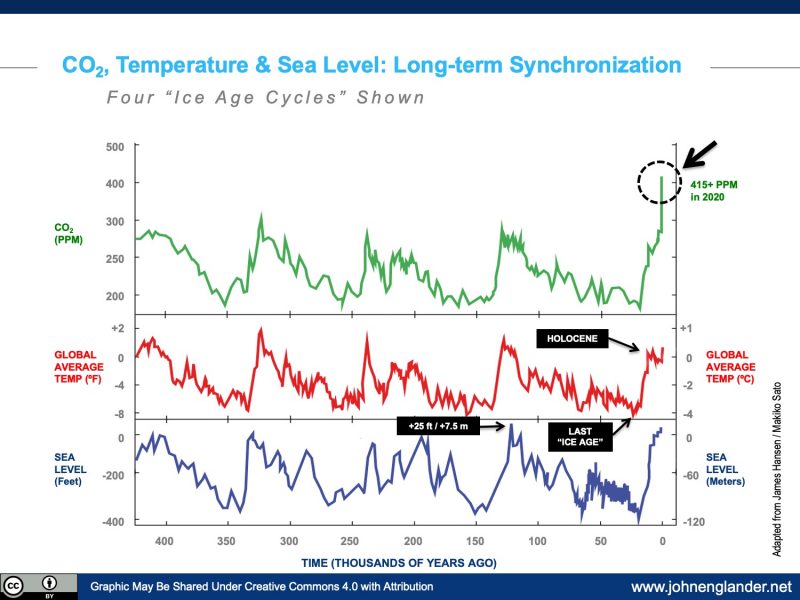
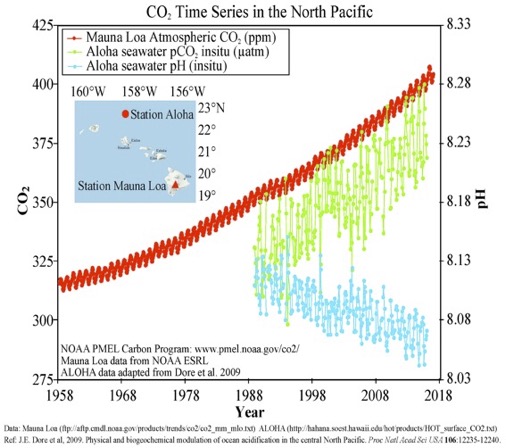
These changes are already causing increased harm from natural disasters such as heat waves, hurricanes, floods, wildfires, and drought. Coral reefs, critical to a wide variety of sea life, are suffering from bleaching and disease outbreaks. Risks from tropical diseases are increasing. All of these consequences of increasing atmospheric CO2 will continue to worsen as we burn more fossil fuels.
Here are some graphs (from BBC) that illustrate the extent of the climate emergency:
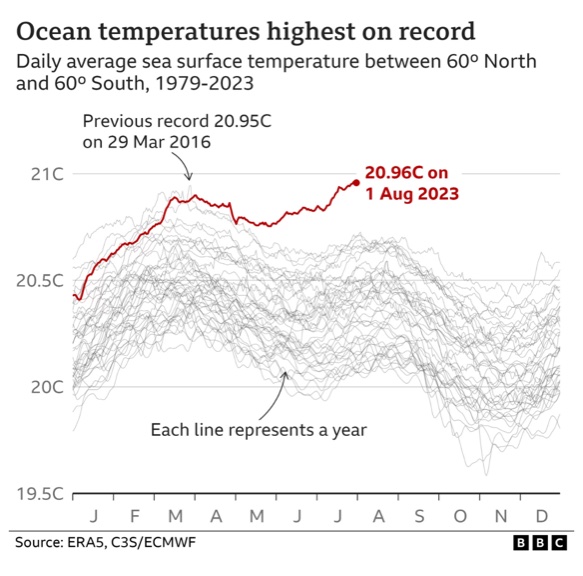
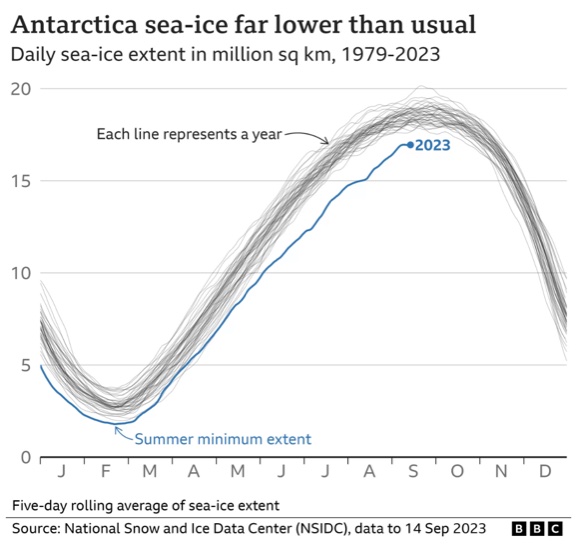
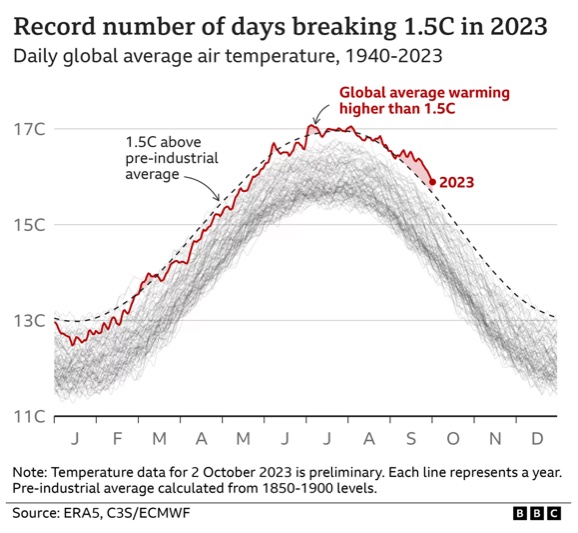
What Can We Do?
Some simple suggestions are to use less energy, use renewable or nuclear energy, and stop deforestation. Be aware that increasing energy demands due to global population growth can negate any climate-related mitigation efforts.
Here are some links suggesting more comprehensive solutions:
https://nap.nationalacademies.org/read/12781/chapter/1
https://nca2018.globalchange.gov/chapter/28/
https://nca2018.globalchange.gov/chapter/29/
Created: October 11, 2023; Last updated:
![]() Licensed under a Creative Commons Attribution-ShareAlike 4.0
International Public License.
Licensed under a Creative Commons Attribution-ShareAlike 4.0
International Public License.
© Copyright 2023 Robert Close